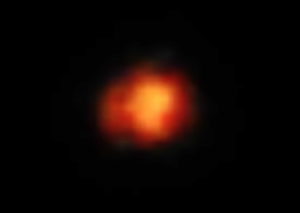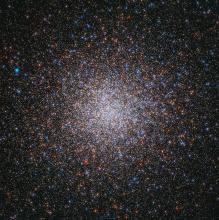This infrared image from Webb Space Telescope shows one of the oldest galaxies ever discovered. Known as Maisie's Galaxy, we see it as it looked roughly 400 million years after the Big Bang. It is less massive than our home galaxy, the Milky Way, but it is giving birth to many more stars. [NASA/STScI/CEERS/TACC/Univ. of Texas at Austin/S. Finkelstein/M. Bagley]
You are here
Unexpected Galaxies
Scientists often say they hope their experiments produce unexpected results, because that gives them something new to think about. If that’s so, then the scientists who study the birth of galaxies should be ecstatic these days. Observations by Webb Space Telescope have revealed many more galaxies in the early universe than current models had suggested.
Webb sees the early universe more clearly than other telescopes — a combination of its large mirror and its position in space, which allows it to study the light coming from the first stars and galaxies.
One of its discoveries is known as Maisie’s Galaxy. It’s named for the daughter of Steven Finkelstein, who leads a team that’s looking at early galaxies, because it was discovered on her birthday.
A first look suggested that we see the galaxy as it looked when the universe was about 300 million years old, making it the oldest galaxy yet seen. Follow-up observations added about a hundred million years to the estimate. Even so, it’s still among the most-distant galaxies seen so far.
The galaxy is less massive than our home galaxy, the Milky Way. But it’s giving birth to more stars — a vigorous young galaxy not long after the dawn of time.
Maisie’s Galaxy is near the Big Dipper, which is low in the north at nightfall, and high in the north at first light. But you can’t see Maisie’s Galaxy without the power of Webb Space Telescope.
Script by Damond Benningfield
Get Premium Audio
Listen to today's episode of StarDate on the web the same day it airs in high-quality streaming audio without any extra ads or announcements. Choose a $8 one-month pass, or listen every day for a year for just $30.





